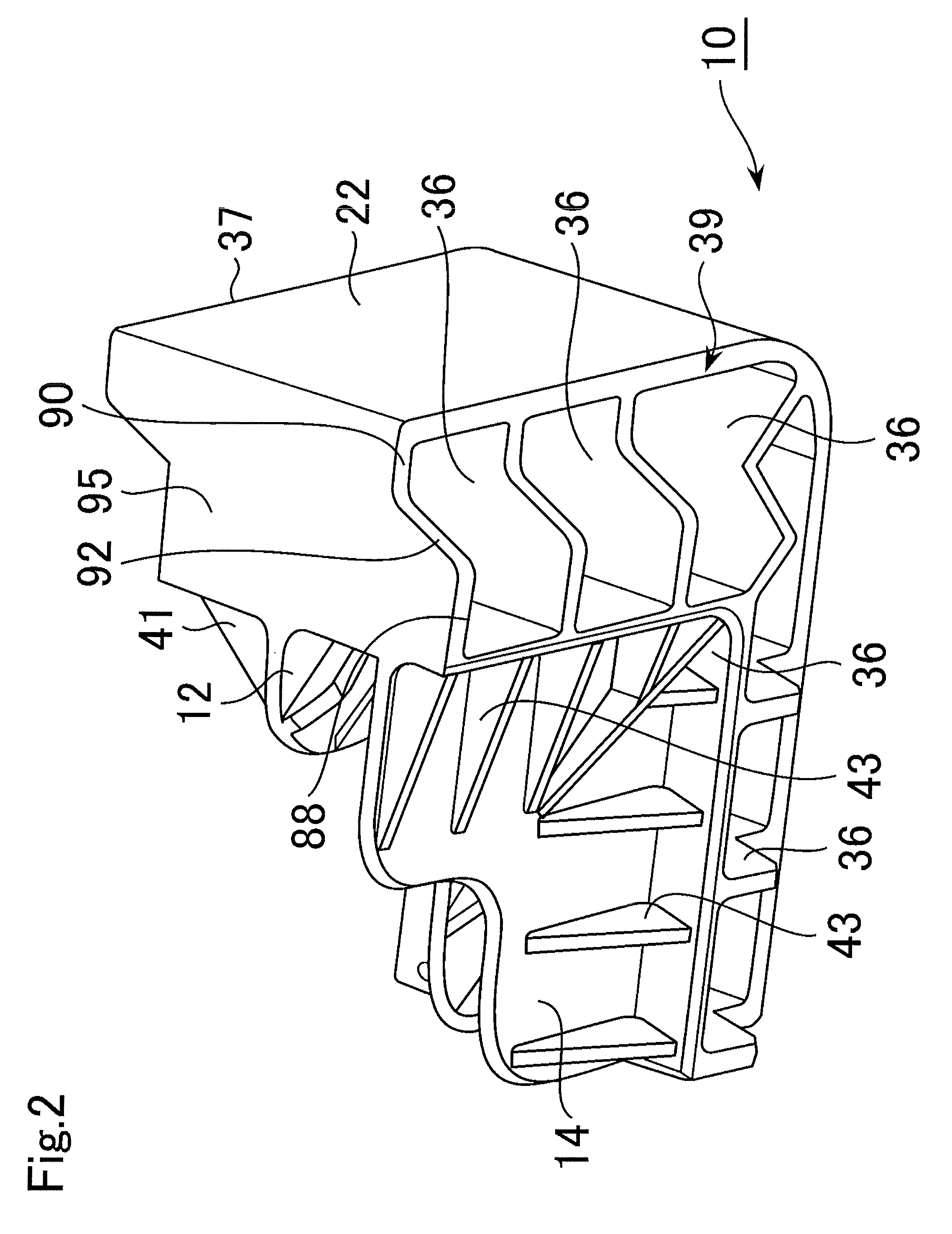Module for stacking thin panels and method of stacking thin panels
a technology of modules and thin panels, applied in the direction of stacking articles, packaging goods types, transportation and packaging, etc., can solve the problems of damage to the stacked thin panels, the difficulty of stacked thin panels, and the difficulty of related art modules in efficiently and stably stacking a plurality of thin panels in a vertical direction,
- Summary
- Abstract
- Description
- Claims
- Application Information
AI Technical Summary
Benefits of technology
Problems solved by technology
Method used
Image
Examples
Embodiment Construction
[0047]A detailed description of a module 10 according to a first embodiment of the present invention is given with reference to the drawings. In the description below, the module 10 is used for stacking rectangular solar panels P serving as an example of thin panels to be stacked.
[0048]The solar panel P includes cells that are serially connected, and resin, tempered-glass, and a metal frame for protection of these cells. The solar panel P is in the form of a thin plate. Specifically, the solar panel P has a laminated structure in which the cells made of silicone are embedded between a glass layer and a plastic layer or between glass layers. The solar panel P has a thickness of several millimeters (mm), an area of several square meters (m2), and a weight of 10 to 30 kilograms (Kg). Thus, the solar panel P is a precise and fragile structural body.
[0049]This embodiment describes a case where four modules 10 for stacking the thin panels directly support four corners of the solar panel P...
PUM
 Login to View More
Login to View More Abstract
Description
Claims
Application Information
 Login to View More
Login to View More - R&D
- Intellectual Property
- Life Sciences
- Materials
- Tech Scout
- Unparalleled Data Quality
- Higher Quality Content
- 60% Fewer Hallucinations
Browse by: Latest US Patents, China's latest patents, Technical Efficacy Thesaurus, Application Domain, Technology Topic, Popular Technical Reports.
© 2025 PatSnap. All rights reserved.Legal|Privacy policy|Modern Slavery Act Transparency Statement|Sitemap|About US| Contact US: help@patsnap.com



